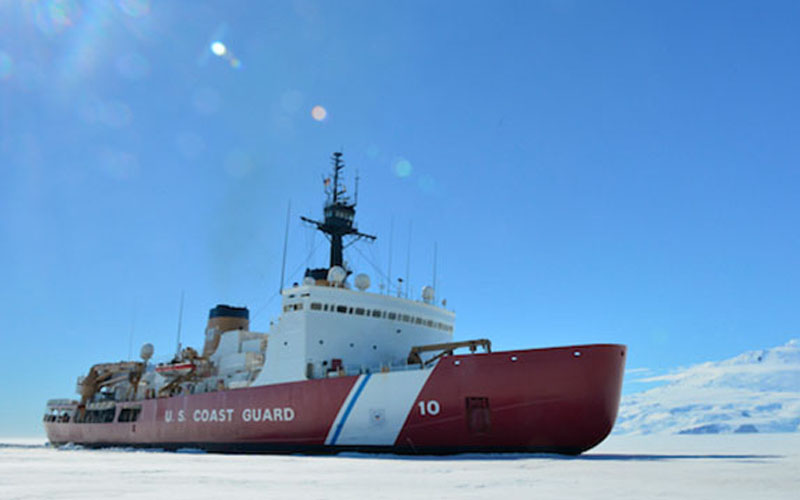
by Admiral Paul Zukunft, U.S. Coast Guard (Retired)
For more than 45 years I had the distinct honor of wearing the uniform of a Coast Guardsman. My career culminated in serving for every man and woman—active, reserve, civilian, auxiliary, and their family members—as the 25th Commandant of the Coast Guard. Over 35 of those years were spent on the front lines of Coast Guard operations including eight commands at a time when my service was obliged to operate under the mantra of “doing more with less.” “Doing more with less” are appropriate words for a martyr, and the one certainty of being a martyr is inevitable death. Thus, during my tenure, I set out to rid the Coast Guard of this lexicon and am deeply indebted to my senior leadership team, the Department of Homeland Security, and the 114th and 115th Congresses for the largest appropriation in Coast Guard history.
Yet in many corners of the world and throughout our great nation, the Coast Guard has been an enigma. We are a service like no other. First and foremost, we are an armed service that takes the military oath to support and defend the Constitution and obey the orders of the President of the United States. Coast Guard personnel have served in every military campaign dating back to our inception on 4 August 1790. Second, the Coast Guard has broad law enforcement authority while fulfilling the requirements of more than 60 treaties with maritime nations to interdict illicit drugs, illegal fishing activity, and weapons of mass destruction in the territorial waters of those signatory nations. In the past two years, the Coast Guard interdicted more than 900,000 pounds of cocaine (more than the collective efforts of all the U.S. law enforcement entities) in a fight against a drug trade that is creating civil unrest and spawning illegal migration in Central America—and contributing to the more than 70,000 overdose deaths in the United States each year. Third, we are members of the national intelligence community and our drug interdiction success attributes in large measure to the unity of effort among our interagency partners. Fourth, we maintain and regulate the U.S. maritime transportation system that accounts for more than $4.6 trillion of commerce each year. And fifth, every member of the Coast Guard—active, reserve, civilian, and auxiliarist—is a first responder as we witnessed most recently during hurricanes Harvey, Irma, Maria, and Florence when the Coast Guard saved nearly 11,000 lives.
The Coast Guard is not a 9:00 am–5:00 pm service nor is it constrained by a 40-hour work week while being on call 24 hours a day 7 days a week. The Coast Guard is no “force in garrison,” because the service’s men and women are all serving along the frontline on all seven continents and in more than 100 countries. Despite being one of the armed services, only 4 percent of our appropriation is sourced from the Department of Defense, yet on any given day, over one-third of our operational resources are deployed in support of the military geographic combatant commanders around the globe. The Coast Guard has strived to maintain continuity of operations and modernize its capital plant while faced with 34 continuing resolutions since 2010. And while the Department of Defense realized a new highwater mark in its 2019 appropriation, the Coast Guard was excluded from that package and has yet to see its appropriation for 2019 that began on 1 October. To add insult to injury, the Coast Guard is no longer “doing more with less,” but “doing all with nothing.” I have served shoulder to shoulder with our service members during previous government shutdowns and listened to the concerns of our all-volunteer force. This current government shutdown is doing long-term harm and is much more than pablum to feed the 24-hour news cycle. We are now in uncharted waters given its duration and the hardship its causing, particularly at many Coast Guard installations that reside in high-cost communities along the U.S. coastline where service personnel already live paycheck-to-paycheck to pay the bills and meet childcare costs that can exceed $2000 per month for one child.
Mission-essential training is being deferred with egregious implications for a service that has as its motto: Semper Paratus—Always Ready. On 19 January the Coast Guard was prepared to place its newest, 418-foot national security cutter, the USCGC Kimball (WMSL-756), in commission. That commissioning ceremony has been delayed due to the government shutdown, and ironically the spouse of the former Chairman of the Senate Appropriations Committee, Senator Thad Cochran, is the ship’s sponsor. Each of the Coast Guard’s national security cutters typically interdict during its inaugural deployment a wholesale value of drugs that exceeds the initial acquisition cost of the cutter!
Finally, the United States is rapidly becoming an Arctic nation in name only. Russia maintains a fleet of more than 40 icebreakers and is turning the Northern Sea Route into its de facto Suez Canal during the ice-free season in defiance of the Law of the Sea Convention. The only heavy icebreaker in the U.S. inventory to challenge Russia’s claim is the USCGC Polar Star (WAGB-10), commissioned in 1976 and approaching the end of its service life. Despite the tremendous progress of the Navy and Coast Guard Joint Program Office to recapitalize the nation’s icebreaker fleet, this lapse in appropriation will further delay that effort when there was no time to spare from the outset.
The U.S. Coast Guard is a “service like no other” with the exception that Coast Guard men and women place service above self, exactly as do each member of the Army, Air Force, Navy, and Marine Corps. Those three poignant words—service before self—on a grand scale need to guide our political leaders to avert the calamity confronting the world’s best coast guard.
Admiral Zukunft served as the 25th Commandant of the U.S. Coast Guard.





